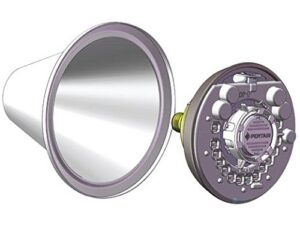Indoor swimming pools are used for swimming, physical education, competitive sports, and relaxation. Swimming Pool Lighting Systems frees indoor swimming pools from the limits of daylight, increasing their quality and duration of usage. Nonetheless, good construction should allow as much sunlight as possible to fall on the pool area. An energy management system may automatically alter artificial lighting in response to daylight supply. This reduces energy, lamp replacement, and maintenance expenses. As described in the chapter, service life is the deciding element in terms of cost savings and replacement cycle length for LED luminaires.
The visual tasks influence the quality and quantity of lighting, which are further determined by the type of sport and viewing distance. Swimming teachers, trainers, pool attendants, and judges must be able to swiftly and convincingly identify swimmers’ and players’ action sequences, body movements, facial expressions, and ball motions. Reflections of general illumination off the water surface, for example, can interfere with pool attendants’ perception of underwater movements. Underwater spotlights can help to mitigate this issue to some extent, although it is preferable to install luminaires outside of the pool for ease of maintenance.
Competitive swimmers must be able to identify the finish line, lane markers, other swimmers and balls. Underwater spotlights must not produce glare, hence they should be switched off during contests.
Leisure swimmers are interested in ensuring their personal surroundings in and out of the water, as well as an experience-based atmosphere throughout the indoor swimming pool space. The aim for spectators is to be able to see the sport or event without interruption. Where illumination meets the needs of attendants, sight conditions for swimmers and spectators are typically satisfactory.
Design components
Furthermore, the design components of multi-purpose water parks, which include sporting events and leisure-time enjoyment, are critical to economic success. Accent lighting in seating or other audience areas, aesthetic luminaires, optimal light source colour rendering, underwater lighting, illumination of sculptures, art on walls and load-bearing columns, and slow light changes with controlled brightness levels and changing light colours transform ordinary indoor swimming pools into experience spaces.
Renovations of older indoor swimming pool
Renovations of older indoor swimming pools have become a popular trend due to high operating expenses. Existing lighting installations in indoor swimming pools do not meet minimal illumination quality standards, safety restrictions, or the need for lower maintenance and energy costs. Older lighting setups are less likely to meet these standards. It is advised that expert designers assist in the construction of contemporary, low-maintenance Swimming Pool Lighting Systems that fully comply with safety rules and building regulations. Switching approaches that make use of daylight, such as light management systems or demand-based group switching, result in extra energy savings. Easy access to luminaires for maintenance purposes is a critical factor, and it is sufficient cause for lighting restoration in many older systems.




Leave A Comment